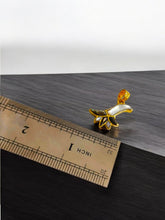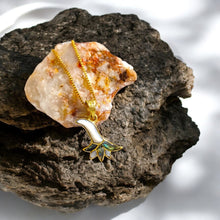
Embrace the spiritual essence of ancient Egypt with our Gold Lotus Flower Abalone Necklace. This exquisite pendant, inspired by the sacred Egyptian lily, symbolizes rebirth, enlightenment, and divine energy. Handcrafted with precision, it serves as a powerful talisman, promoting healing and inner peace.
Made from a durable alloy of 5% Gold and 95% Brass, this pendant features a vintage-inspired finish, exuding timeless elegance. At its heart, a stunning blend of Mother of Pearl and Abalone shell creates a mesmerizing display of colors that dance beautifully with every shift of light—shimmering blues, greens, and iridescent hues that capture the magic of the ocean and sky.
Care & Durability
Designed to fit any chain up to 5mm in thickness, this pendant is as versatile as it is meaningful. To maintain its brilliance, avoid contact with harsh chemicals, moisture, and excessive sweat. Gently clean it with a soft cloth to preserve its luster and intricate details.
A Glimpse into History
The lotus flower held deep significance in ancient Egyptian culture, symbolizing purity, rebirth, and spiritual awakening. Often depicted in hieroglyphics and temple carvings, it was believed to offer protection and divine guidance to those who wore it.
Thank you for visiting our shop! If you have any questions, feel free to reach out—we're always happy to help.















